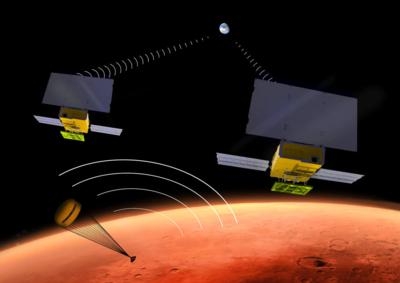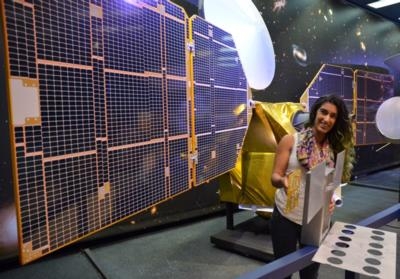Will Deploy The Small Satellites On Agency’s Next Mission To Mars
When NASA launches its next mission on the journey to Mars – a stationary lander in 2016 – the flight will include two CubeSats. This will be the first time CubeSats have flown in deep space. If this flyby demonstration is successful, the technology will provide NASA the ability to quickly transmit status information about the main spacecraft after it lands on Mars.

The twin communications-relay CubeSats, being built by NASA's Jet Propulsion Laboratory (JPL), Pasadena, California, constitute a technology demonstration called Mars Cube One (MarCO). CubeSats are a class of spacecraft based on a standardized small size and modular use of off-the-shelf technologies. Many have been made by university students, and dozens have been launched into Earth orbit using extra payload mass available on launches of larger spacecraft.
The basic CubeSat unit is a box roughly 4 inches (10 centimeters) square. Larger CubeSats are multiples of that unit. MarCO's design is a six-unit CubeSat – about the size of a briefcase -- with a stowed size of about 14.4 inches (36.6 centimeters) by 9.5 inches (24.3 centimeters) by 4.6 inches (11.8 centimeters).
MarCO will launch in March 2016 from Vandenberg Air Force Base, California on the same United Launch Alliance Atlas V rocket as NASA’s Interior Exploration using Seismic Investigations, Geodesy and Heat Transport (InSight) lander. Insight is NASA’s first mission to understand the interior structure of the Red Planet. MarCO will fly by Mars while InSight is landing, in September 2016.
“MarCO is an experimental capability that has been added to the InSight mission, but is not needed for mission success,” said Jim Green, director of NASA’s planetary science division at the agency’s headquarters in Washington. “MarCO will fly independently to Mars."

During InSight’s entry, descent and landing (EDL) operations on Sept. 28, 2016, the lander will transmit information in the UHF radio band to NASA's Mars Reconnaissance Orbiter (MRO) flying overhead. MRO will forward EDL information to Earth using a radio frequency in the X band, but cannot simultaneously receive information over one band while transmitting on another. Confirmation of a successful landing could be received by the orbiter more than an hour before it’s relayed to Earth.
MarCO’s radio is about softball-size and provides both UHF (receive only) and X-band (receive and transmit) functions capable of immediately relaying information received over UHF.
The two CubeSats will separate from the Atlas V booster after launch and travel along their own trajectories to the Red Planet. After release from the launch vehicle, MarCO's first challenges are to deploy two radio antennas and two solar panels. The high-gain, X-band antenna is a flat panel engineered to direct radio waves the way a parabolic dish antenna does. MarCO will be navigated to Mars independently of the InSight spacecraft, with its own course adjustments on the way.
Ultimately, if the MarCO demonstration mission succeeds, it could allow for a “bring-your-own” communications relay option for use by future Mars missions in the critical few minutes between Martian atmospheric entry and touchdown.
By verifying CubeSats are a viable technology for interplanetary missions, and feasible on a short development timeline, this technology demonstration could lead to many other applications to explore and study our solar system.
(Images provided by NASA)
 Classic Aero-TV: Remembering Bob Hoover
Classic Aero-TV: Remembering Bob Hoover ANN FAQ: Follow Us On Instagram!
ANN FAQ: Follow Us On Instagram! ANN's Daily Aero-Linx (05.15.24)
ANN's Daily Aero-Linx (05.15.24) ANN's Daily Aero-Term (05.15.24):Altimeter Setting
ANN's Daily Aero-Term (05.15.24):Altimeter Setting Aero-News: Quote of the Day (05.16.24)
Aero-News: Quote of the Day (05.16.24)




